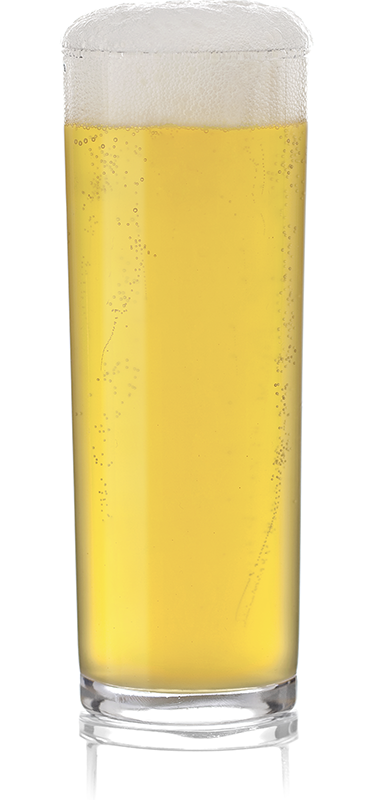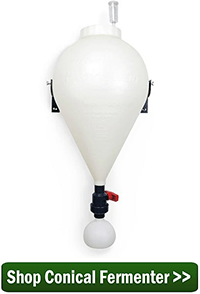 Crystal clear, the color of golden straw, a Kölsch is yet another excellent beer for summer drinking. With that in mind, here is a Kölsch profile overview along with some Kölsch brewing tips.
Crystal clear, the color of golden straw, a Kölsch is yet another excellent beer for summer drinking. With that in mind, here is a Kölsch profile overview along with some Kölsch brewing tips.
Kölsch is an ale style native to Köln, Germany, known to us Americans as Cologne. Technically, only beers brewed in Cologne may be called Kölsch (but I don’t think anyone will prosecute if you do!).
Kölsches are similar to light lagers in that they’re clean, crisp, and refreshing, however they typically have a more pronounced, moderate hoppiness than light lagers. They are also distinguished by a somewhat fruity yeast character and a distinctively dry finish.
Kölsch beers use very light malts, such as Pilsner or Two-Row, to achieve their pale color. They may contain a small proportion of wheat malt, usually around 10-20% of the total grain bill.
When it comes to hops, Kölsch beers have a few more IBUs than the standard light lager. The BJCP guidelines call for 20-30 IBUs, with most of the hops added early in the boil. To be authentic, a Kölsch should use German noble hops, specifically Spalt, Saaz, Tettnang, or Hallertau.
Though the Kölsches are typically brewed with top-fermenting ale yeasts, they are fermented at a cooler temperature, say 55°F to 65°F, and usually go through a lagering period at even colder temperatures. This blend between an ale and a lager makes a Kölsch recipe an excellent “entry-level” beer for drinkers making the transition from macro lagers into more adventurous craft beer styles.
- For the grain bill, starting with enough Pilsner or Two-Row malt to achieve an original gravity of about 1.047. Vienna malt is a suitable alternative. Use up to 1-2 lbs. of wheat malt if desired.
- When brewing a Kölsch extract recipe use a very pale malt extract, such as Stream Freak Light LME or Light DME, and may wish to use some Pilsner and/or wheat malt for a mini-mash to add some malty, grainy flavor.
- Hops should ideally be of the noble hops variety, such as Spalt, Saaz, Tettnang, or Hallertau. Perle, Northern Brewer, and Mt. Hood can work too. Add most, if not all of the hops at the 60 minute addition, aiming for about 25 IBUs.
- When making a Kölsch beer yeast selection is important. The Kölsch yeast strain is ideal, but lager yeasts and other German ale yeasts can be used as well.
- To achieve a dry finish, a highly attenuating yeast should be used. Mashing around 148°-150°F should produce a more fermentable wort, resulting in a lower final gravity and less residual sweetness.
- A key factor in creating an authentic Kölsch is to ferment it at fairly low
 temperatures. Primary fermentation should be around 55°-65°F, and secondary fermentation around 40°-50°F. These lower fermentation temperatures may mean that fermentation takes longer than it does for a typical ale.
temperatures. Primary fermentation should be around 55°-65°F, and secondary fermentation around 40°-50°F. These lower fermentation temperatures may mean that fermentation takes longer than it does for a typical ale.
These Kölsch brewing tips should be enough to get you going and maybe even produce your on Kölsch recipe. But, if you want to cut to the chase and start making Kölsch beer, now? The Brewer’s Best Kolsch Recipe Kit includes everything required for a five gallon batch.
—–
David Ackley is a beer writer, brewer, and self-described “craft beer crusader.” He is a graduate of the Siebel Institute of Technology’s “Start Your Own Brewery” program and the Oskar Blues Brew School in Brevard, NC.

